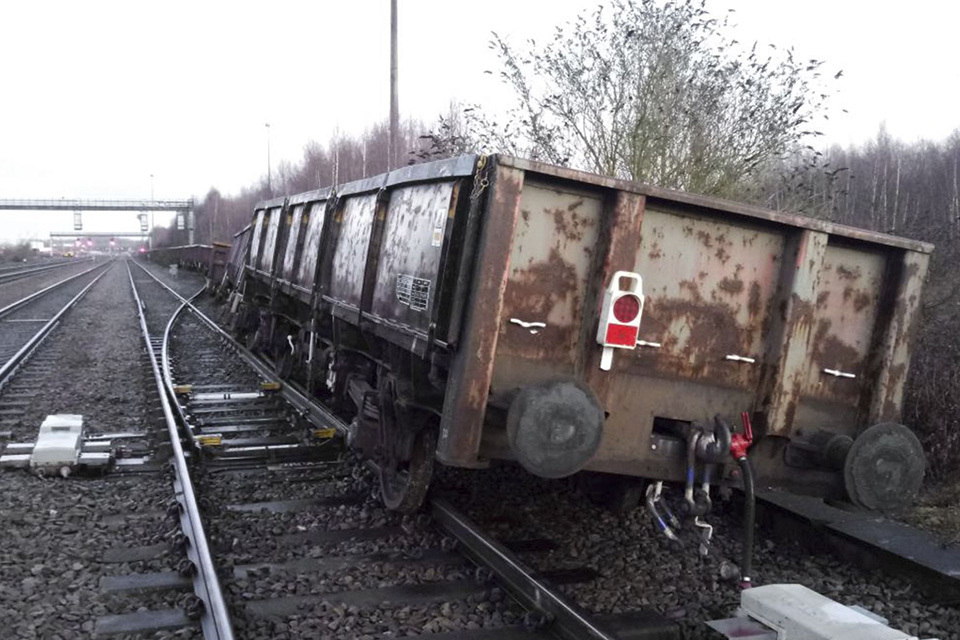SUMMARY:
At 04:42 hrs on 17 January 2021, a rake of 22 wagons, 21 of which were loaded, ran away from Old Bank sidings at Toton, Nottinghamshire. As it ran away, the rake passed a red signal, which generated an alarm that alerted the signaller. The rake passed a second red signal and, a short distance later, the leading four wagons derailed at the end of the run-out rails associated with a set of trap points. The trap points worked as intended to derail the unauthorised movement. The leading two derailed wagons stopped foul of the adjacent running line, although no trains were nearby when the derailment occurred. The rake of wagons travelled a total distance of about 0.6 miles (1.0 km) during the runaway.
RAIB’s investigation found that the rake of wagons ran away because no one had secured it with either handbrakes or scotches after it was stabled in Old Bank sidings the previous evening. This meant that the wagons were only being held by air trapped in their brake systems, which subsequently leaked away. The wagons were free to move because the incoming train they were part of had not been secured before its locomotive was uncoupled and because there was miscommunication between the ground staff on duty about who would secure the train. An underlying factor was that staff at Old Bank sidings were routinely leaving trains unsecured for short periods of time, but this was not identified by DB Cargo’s safety assurance activities. A second underlying factor was that DB Cargo had no clear process in place that defined the tasks required when trains arrived, and no process to provide confirmation that these tasks had been carried out. The consequences of the runaway were made potentially worse because the leading two wagons fouled the adjacent running line after derailing at the trap points. RAIB found that Network Rail’s risk assessment processes for both new and existing trap points only considered mitigations that were not applicable to uncontrolled runaway vehicles. These assessments also did not consider that runaway vehicles, once derailed, could travel as far as they did in this accident.
RAIB has made four recommendations. The first is that DB Cargo should establish the extent to which vehicles are being left unsecured in its yards and sidings, and identify and address the possible reasons for this. The second recommendation is that DB Cargo should review and improve its processes for trains arriving at its yards and sidings so it is clear when tasks should be undertaken, who is responsible for them and how their completion is communicated. The third recommendation is that DB Cargo should review its current arrangements for supervising, monitoring and auditing safety in its yards and sidings. The fourth recommendation calls on Network Rail to revise its risk assessment process for trap points, so that it considers the risk of an adjacent running line becoming fouled when uncontrolled vehicles run away.
RAIB also identified two learning points. The first reminds drivers and staff carrying out ground staff duties of the importance of securing vehicles prior to detaching locomotives. The second is a reminder that the primary purpose of trap points located on the exit from sidings, or on the exit of a goods line which connects to sidings, is to protect running lines from runaway vehicles

 www.gov.uk
www.gov.uk


